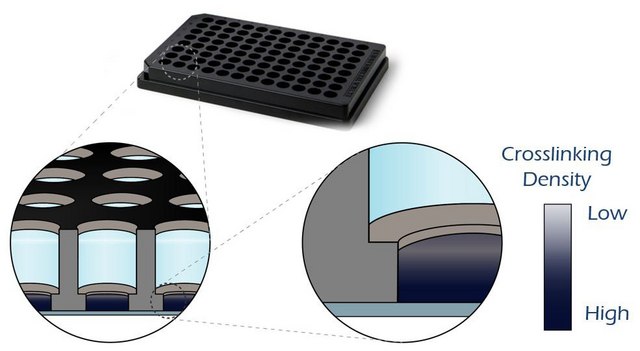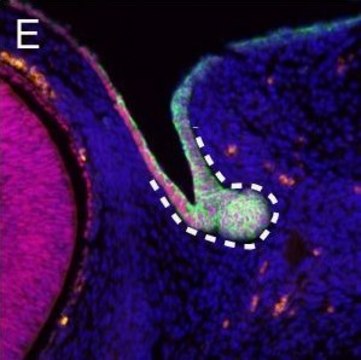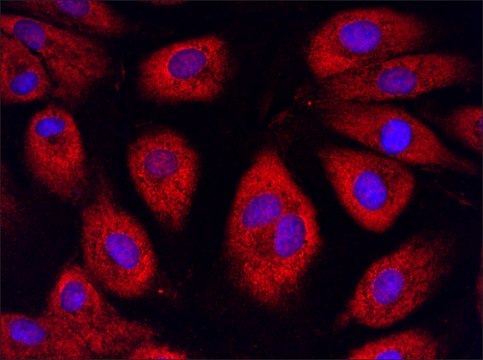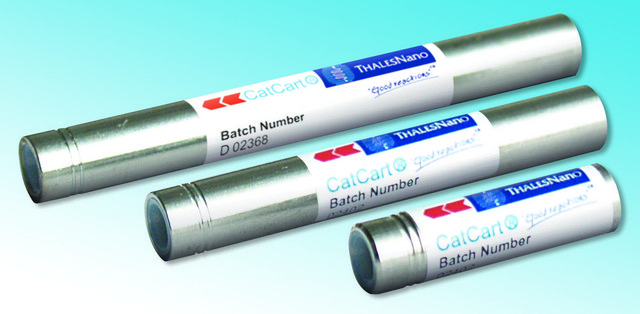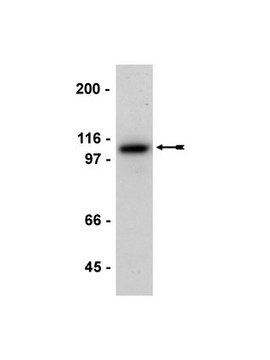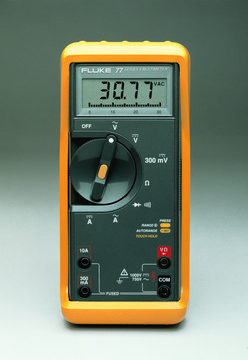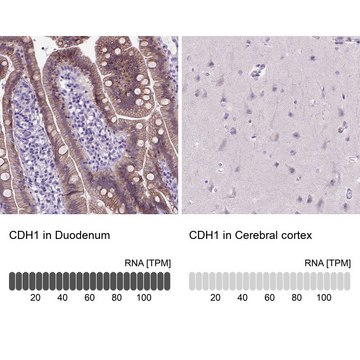General description
We are committed to bringing you greener alternative products, which adhere to one or more of The 12 Principles of Green Chemistry. This antibody is Preservative-free, produced without the harm or sacrifice of animals and exceptionally stable to allow for ambient shipping and storage if needed and thus aligns with "Waste Prevention", "Designing Safer Chemicals" and "Design for Energy Efficiency".
Click here for more information.
ZooMAb® antibodies represent an entirely new generation of recombinant monoclonal antibodies. Each ZooMAb® antibody is manufactured using our proprietary recombinant expression system, purified to homogeneity, and precisely dispensed to produce robust and highly reproducible lot-to-lot consistency. Only top-performing clones are released for use by researchers. Each antibody is validated for high specificity and affinity across multiple applications, including its most commonly used application. ZooMAb® antibodies are reliably available and ready to ship when you need them.
Specificity
Clone 1E8 is a ZooMAb® rabbit recombinant monoclonal antibody that specifically detects Mucin-14. It targets an epitope within 18 amino acids from the cytoplasmic domain from the C-terminal half.
Immunogen
KLH-conjugated linear peptide corresponding to 18 amino acids from the cytoplasmic domain within the C-terminal half of human Mucin-14.
Application
Quality Control Testing
Evaluated by Western Blotting in bEND.3 cell lysate.
Western Blotting Analysis: A 1:10,000 dilution of this antibody detected Mucin-14/EMCN in bEND.3 cell lysate.
Tested Applications
Immunocytochemistry Analysis: A 1:100 dilution from a representative lot detected Mucin-14/EMCN in bEND.3 and HepG2 cells.
Affinity Binding Assay: A representative lot of this antibody bound Mucin-14/EMCN with a KD of 2.7 x 10-7 in an affinity binding assay.
Immunohistochemistry (Paraffin) Analysis: A 1:1,000 dilution from a representative lot detected Mucin-14/EMCN in human kidney tissue sections.
Flow Cytometry Analysis: 0.1 µg from a representative lot detected Mucin-14/EMCN in one million bEND.3 cells.
Note: Actual optimal working dilutions must be determined by end user as specimens, and experimental conditions may vary with the end user.
Target description
Endomucin (UniProt: Q9ULC0; also known as Endomucin-2, Gastric cancer antigen Ga34, Mucin-14, MUC-14) is encoded by the EMCN (also known as EMCN2, MUC14) gene (Gene ID: 51705) in human. Mucins are large, heavily glycosylated, extracellular proteins that establish a selective molecular barrier at the epithelial surface and engage in morphogenetic signal transduction. They are the major macromolecular components of mucus. They have a unique and characteristic sequence of tandemly repeating amino acids rich in serine and/or threonine. They are expressed by various epithelial cell types that exist in relatively harsh environments, such as air–water interface of the respiratory system and the acidic environment of the stomach. Mucin-14 is a single-pass type I membrane sialoglycoprotein that is synthesized with a signal peptide (aa 1-18), which is subsequently cleaved off to produce the mature form that contains an extracellular domain (aa 19-190) that is highly O-glycosylated at serine and threonine residues; a transmembrane domain (aa 191-211); and a cytoplasmic domain (aa 212-261). Three isoforms of Mucin-14 have been described that are produced by alternative splicing. Isoform 1 is membrane associated protein that consistently localizes to the plasma membrane and less abundantly to Golgi-like perinuclear stacks. Isoform 2 lacks amino acids 140-222, and isoform 3 is a secretory form. Its expression is observed in heart, kidney, and lungs. It is also expressed in retinal endothelial cells, and its expression is reduced under conditions of high blood glucose in vitro and in vivo. Its overexpression can restore the glycocalyx of retinal endothelial cells in diabetic rats. In the eye, it inhibits retinal inflammation and promotes retinal microvascular angiogenesis during retinal development. It has been identified as a novel VEGF‐induced angiogenic regulator that can reduce VEGF‐induced migration, proliferation, and tube formation of human retinal microvascular endothelial cells. It is also reported to interfere with the assembly of focal adhesion complexes and inhibit the interaction between cells and the extracellular matrix. This ZooMAb® recombinant monoclonal antibody, generated by our propriety technology, offers significantly enhanced specificity, affinity, reproducibility, and stability over conventional monoclonals. (Ref.: Zhang, G., et al (2000). Animal Model Exp. Med. 3(4); 325-329; Park-Windhol, C., et al. (2017). Sci. Rep. 7(1); 17138; Hollingsworth, MA., and Swanson, BJ. (2004). Nat. Rev. Cancer. 4(1); 45-60).
Physical form
Purified recombinant rabbit monoclonal antibody IgG, lyophilized in PBS with 5% Trehalose, normal appearance a coarse or translucent resin. The PBS/trehalose components in the ZooMAb formulation can have the appearance of a semi-solid (bead like gel) after lyophilization. This is a normal phenomenon. Please follow the recommended reconstitution procedure in the data sheet to dissolve the semi-solid, bead-like, gel-appearing material. The resulting antibody solution is completely stable and functional as proven by full functional testing. Contains no biocide or preservatives, such as azide, or any animal by-products. Larger pack sizes provided as multiples of 25 µL.
Reconstitution
300 µg/mL after reconstitution at 25 µL per vial. Please refer to guidance on suggested starting dilutions and/or titers per application and sample type.
Storage and Stability
Recommend storage of lyophilized product at 2-8°C; Before reconstitution, micro-centrifuge vials briefly to spin down material to bottom of the vial; Reconstitute each vial by adding 25 µL of filtered lab grade water or PBS; Reconstituted antibodies can be stored at 2-8°C, or -20°C for long term storage. Avoid repeated freeze-thaws.
Other Notes
Concentration: Please refer to the Certificate of Analysis for the lot-specific concentration.
Legal Information
ZooMAb is a registered trademark of Merck KGaA, Darmstadt, Germany
Disclaimer
Unless otherwise stated in our catalog or other company documentation accompanying the product(s), our products are intended for research use only and are not to be used for any other purpose, which includes but is not limited to, unauthorized commercial uses, in vitro diagnostic uses, ex vivo or in vivo therapeutic uses or any type of consumption or application to humans or animals.

